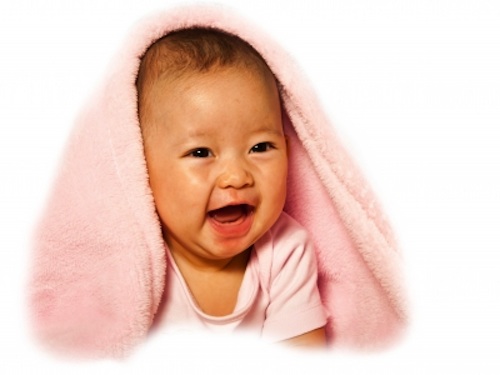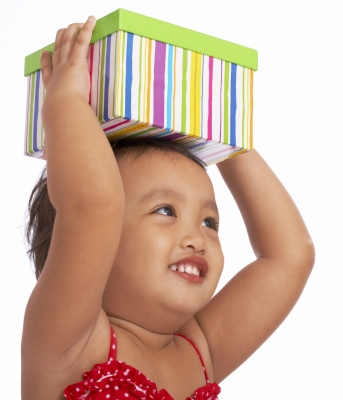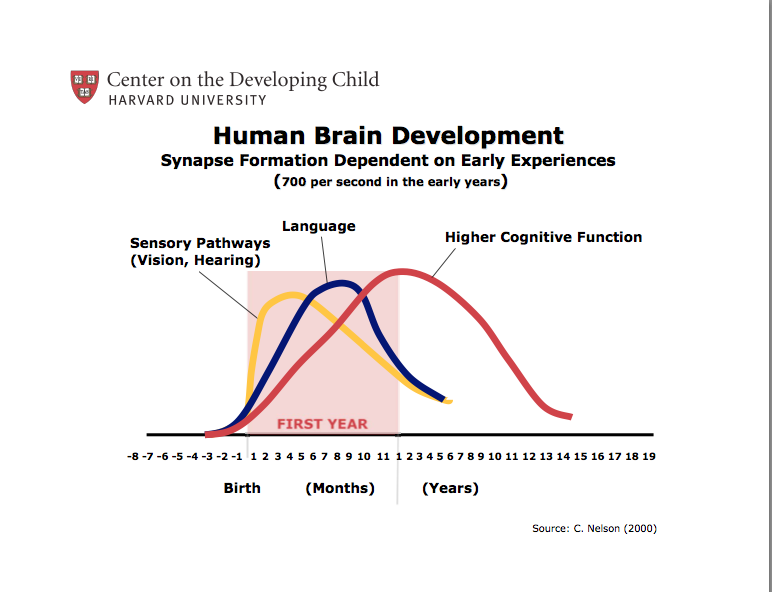5 Ways to Make Your Baby Smile
If your baby just started smiling, you want to see that beautiful, cheeky smile all the time. Sometimes babies smile at new faces, but sometimes they enjoy looking at familiar ones. It can be tough to predict exactly what will make a baby smile, but Mom Trusted has a few tricks up our sleeve. Try these five ways to make your baby smile:
Go for the colors
Babies’ brains are still developing as they take in everything around them in their new, exciting world. Colors are one thing that can excite and catch a baby’s eye. Introduce your baby to colorful toys and items they can hold onto when they start being able to successfully grab objects at around three or four months.
Play with feathers
There’s nothing like a good tickle to get a baby laughing. Try using pretty, colorful feathers, which work great for babies who may not enjoy aggressive tickling the traditional way.
Make funny faces
Your face is your baby’s favorite to look at so your face making goofy faces may be the key to uncontrollable giggles. Try adding peek-a-boo to your silly faces to make your baby smile even more.
Belly raspberries
Make your baby smile by making raspberries on his or her tiny belly. (These are also called zerbits or belly bubbles).
Sing to your baby
Try singing a lullaby, a silly song or even one on the radio to your little one. People of all ages love music and, because music is still a new phenomenon for your child, it might be just the trick you need to make your baby smile. Over time, you’ll start to experiment and find out which songs make him or her smile most and even establish favorite types of music.
Sources:
-“9 Ways to Make Your Baby Laugh” parenting.com: http://www.parenting.com/gallery/9-ways-to-make-your-baby-laugh?pnid=108127
-“5 Ways to Make Your Baby Laugh” Yahoo! Voices: http://voices.yahoo.com/5-fun-ways-baby-laugh-4090891.html
-“7 Ways to Make a Baby Laugh” The Stir: http://thestir.cafemom.com/baby/135281/7_ways_to_make_a
-Photo courtesy of koratmember/freedigitalphotos.net
Milestones for 12-17 Months
Once your child hits one year, they’ll continue to develop emotionally, physically and cognitively at a rapid rate. Between 12 and 17 months, children start to master skills like running and the ability to follow instructions. Remember that each child develops at his or her own pace so don’t worry if they’re not exactly on track. Here’s a simple breakdown of what milestones to look forward to during these exciting months:
Physical milestones
-Starts showing signs of right or left-handedness
-“Helps” you dress him or her by holding their arms out
-Bends to pick up toys, showing increased coordination
-Eats with his or her hands
-Points
-Starts running
Emotional milestones
-Becomes attached to a favorite stuffed animal or blanket
-Loves playing games
-Develops favorite foods and dislikes others
-Enjoys interacting with other children
Cognitive milestones
-Perfects a couple words and continues to work on others
-Recognizes (and loves) his or her reflection
-Develops the ability to follow simple instructions
-Has a shorter attention span (don’t worry! This is normal)
-Plays pretend
-Sorts toys and other objects by shape, size and color
Sources:
-“Toddler Milestones: 12-17 Months.” Parents.com
-“Developmental: 12 to 15 months.” Parenting Weekly
-Photo courtesy of Stuart Miles/freedigitalphotos.net
Baby Development: What to Look for in Babies 4-7 Months
When your baby hits four months, they’ll begin to go through all sorts of physical and mental growth. From new movements to name recognition, you’ll be amazed at the baby development that your little one goes through in a few short months. MomTrusted has summarized a few exciting milestones to keep an eye out for:
Physical developments
Babies will develop remarkably in physical ways during this stage of growth. Some typical physical developments include:
-The ability to roll right to left
-Some may even develop the ability to roll over to their stomachs
-Color vision
-Clearer vision in general
-Sitting with support and possible on his or her own
-The ability to put support on his or her legs
-Reaching
-Grabbing and transferring with alternating hands
-Raking, or pulling items closer
Mental developments
In addition to going through some big physical changes during these three months, babies will also have tons of new information shaping their minds. Here are some of the cognitive developments that you can expect:
-Spotting covered, “hidden” objects
-Starting to understand and respond to words like “no” and his or her name
-Can keep an eye on moving objects
-Beginning to recognize emotion in voices
-Responding to sounds with his or her own baby noises
Social, language and emotional developments
Finally, between four and seven months, babies will begin to grow socially and emotionally, starting with very small, but powerful signs including:
-Babies’ language skills will increase through babbling consonants.
-He or she will begin to interact with you or others through the form of play.
-Babies start to see, recognize and enjoy their own reflections.
-Not only will babies begin to recognize emotion through voice, but they’ll respond to others’ emotions, often by imitating them.
Sources:
-“Growth and Development Milestones: 4-7 months” parents.com
-“Infant Development: Milestones 4 to 6 Months” Mayo Clinic
-Photo courtesy of magerymajestic/freedigitalphotos.net
Little Minds, Big Development
Early Childhood Brain Development
We believe early education and care is important – that’s pretty obvious. But, even with all the time we’ve spent around early education and care, we are still amazed at the power of a child’s mind. It is what makes early education so important. The Harvard Center on the Developing Child has a great graph that reminded me how truly amazing these little minds are if we nurture them right.
How are you fueling your child’s development?
















